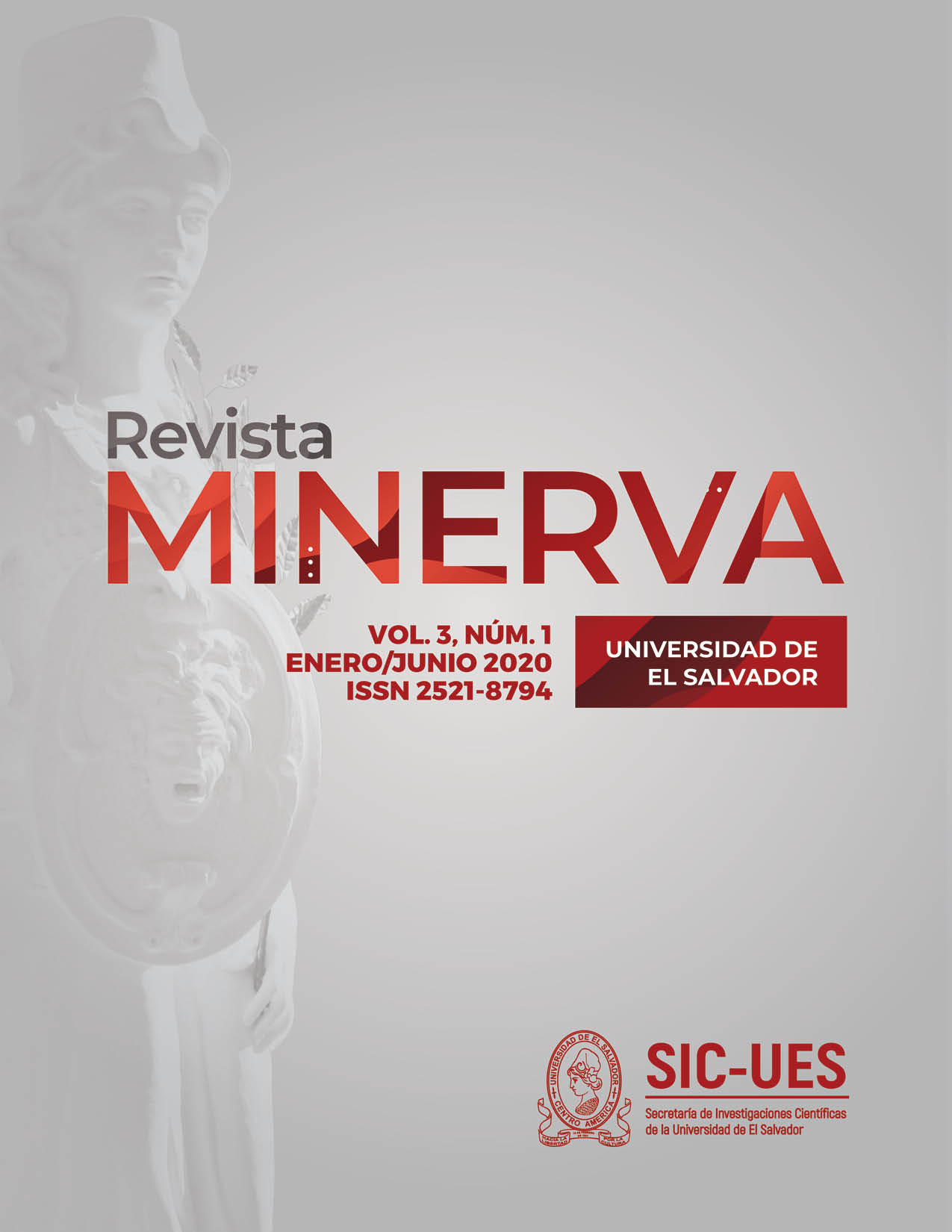Incorporation of native lactic acid bacteria as probiotics in the white shrimp culture Litopenaeus vannamei (Boone 1931) in Las Ánimas shrimp farm, El Salvador
DOI:
https://doi.org/10.5377/revminerva.v3i1.12473Keywords:
White shrimp, Bacteria Lactic acid, Probiotic, Bioremediator, Native bacteria, Lactobacillus paracasei, Lactococcus lactisAbstract
The investigation was carried out in the shrimp farm "Las Ánimas", located in Ánimas Abajo canton, Zacatecoluca, La Paz, El Salvador, from August 2016 to September 2017. The main objective was to search for alternatives that would reduce production costs. shrimp, as well as improving environmental conditions in the study area efficiently. It was carried out in two phases, the first consisted of laboratory work, beginning with the collection of shrimp samples from four ponds of said farm, with the purpose of isolating native strains of Lactobacillus. 40 strains were obtained, of which four were selected to perform probiotic feasibility tests, in the end two strains that met all the requirements as probiotics, these are lactic acid bacteria Lactobacillus paracasei (E91) and Lactococcus lactis (E33). The second phase involved field work, where the probiootic based on isolated native lactic acid bacteria was evaluated against a commercial probiootic EPICIN® G2. Four treatments were configured, two of which contained the native bacteria plus the EPICIN® PST bioremediator and two with the commercial probiootic plus the EPICIN® PST. The results of the treatments made up of lactic acid bacteria plus EPICIN® PST, showed less deterioration of the water parameters. Although the waters were classified as poor, according to the ICA (Water Quality Index), the native probiotics presented little variability between their constants; This data was consistent with the analysis of the Trophic Status Index (TRIX), which classifies the waters of the estuary as Hypertrophic. In the productive parameters, the treatments with lactic acid bacteria generated greater efficiency, since the survival for the T3 and T4 treatments was 47.56% and 45.68%, surpassing the T1 and T2 control treatments with 44.57% and 38.97%, as well as in the survival of the ponds with native bacteria, there was greater efficiency in terms of production yield, since T3 and T4 had a yield of 6,806.36 kg and 5,414.55 kg, while T1 and T2 registered a yield of 5,544.09 kg and 5,387.27 kg. At the same time, a benefit-cost analysis was carried out which showed that using lactic acid bacteria as probiotics produces a reduction in operating costs, since T3 and T4 produce an outflow of USD $ 62,614.63 and USD $ 55,481.78 against the outlays of T1 and T2, which were USD $ 94,105.33 and USD $ 74,456.95; indicating that for T3 and T4 a return of USD $ 1.39 and USD $ 1.25 was made for each dollar invested, while T1 and T2 left a return of USD $ 1.10 and USD $ 1.15 for each dollar invested. With the foregoing, it is concluded that Lactococcus lactis and Lactobacillus paracasei isolated from the digestive tract of shrimp grown on the farm, are on the list of bacteria that can be used as probiotics in shrimp culture in ponds and the present methodology is recommended. to improve the production of shrimp farms in harmony with the environment.
254
Downloads
Published
How to Cite
Issue
Section
License

This work is licensed under a Creative Commons Attribution-NonCommercial-NoDerivatives 4.0 International License.

